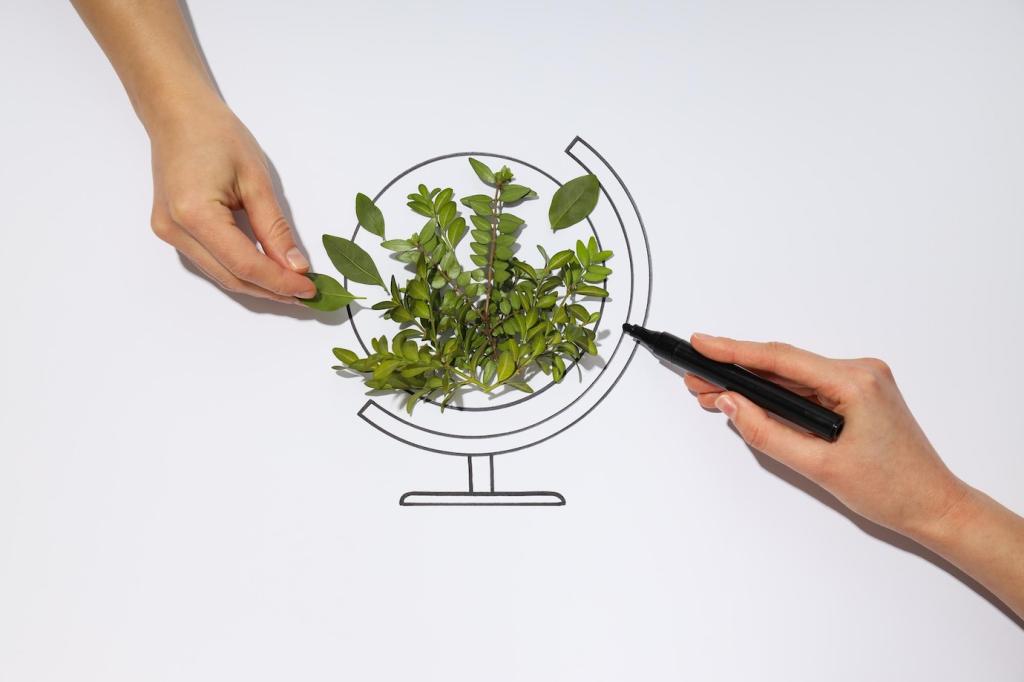Nourish Your Wood: Organic Oils and Treatments for Preservation
Chosen theme: Organic Oils and Treatments for Wood Preservation. Welcome to a warm, hands-on space where wood stays alive, breathes, and ages beautifully through plant-based oils, waxes, and time-tested natural blends. Subscribe for practical guides, heartfelt workshop stories, and honest tips that help your projects endure.

From Fiber to Finish: How Oils Bond
Organic oils penetrate into wood cells, polymerizing within the fibers rather than forming a brittle surface film. This bond flexes with seasonal movement, reduces cracking, and highlights grain depth. Tung and linseed oils cure into resilient networks that feel natural under the hand.
VOC Reality Check
Plant-based oils and waxes often have dramatically lower volatile organic compound levels than synthetic coatings, especially when thinned with citrus-based solvents. That means a gentler smell during application, less irritation, and a healthier workspace without sacrificing durable protection or beauty.
Choosing the Right Oil for Your Project
Tung vs. Linseed: Durability and Sheen
Tung oil cures harder and resists water better, offering a warm matte-to-satin glow with minimal yellowing. Linseed, especially high-quality cold-pressed or polymerized, penetrates deeply and yields a classic amber warmth. Test on offcuts to learn how each transforms your specific wood species.
Walnut, Hemp, and Camellia: Food-Contact Friendly
Walnut oil polymerizes slowly into a gentle, food-contact suitable finish for boards and utensils. Hemp oil dries surprisingly fast for a plant oil, while camellia shines for tool care and subtle luster. For kitchen items, keep blends minimal and clearly plant-sourced for confident, everyday use.
Blends with Beeswax and Citrus D-Limonene
Beeswax adds a soft-touch barrier that enhances water resistance and feel. Citrus d-limonene, a natural solvent from orange peels, can thin oils to improve penetration and flow. Ventilation matters, but the scent is pleasantly mild. Share your favorite ratios, and we’ll feature them in future posts.
Moisture and Sanding Discipline
Aim for wood moisture between about 6% and 12% to help oils absorb consistently. Sand through the grits patiently, stopping around 180–220 for optimal tooth. Vacuum thoroughly, then wipe with a clean, lint-free cloth to remove dust that could clog pores and dull the final sheen.
Raise the Grain, Then Tame It
Lightly dampen the surface to raise whiskers, let it dry, and sand them away. This step prevents roughness after oily coats hit moisture later. It’s a tiny investment that yields a silkier touch and significantly reduces post-finish burnishing required to achieve that coveted hand-rubbed glow.
Open the Pores: Species-Specific Strategies
Ring-porous woods like oak and ash welcome oil but benefit from a pore-clarifying brush before finishing. For tight-grained maple or cherry, keep sanding even and avoid over-polishing, which can inhibit penetration. Gentle grain-filling with natural pumice and oil can create luxuriously flat reflections.
Application Techniques that Last
Liberally flood the surface, allow oil to soak for 15–30 minutes, then wipe every trace of wet residue. Lingering puddles cure sticky and attract dust. That decisive final wipe is the secret behind a clean cure and the kind of natural sheen you can’t fake.
Application Techniques that Last
Apply multiple thin coats with ample time between—often 12–24 hours depending on temperature and humidity. Gentle buffing between coats with a soft cloth or fine pad evens absorption and builds a rich luster gradually. Patience here translates directly into durability you’ll appreciate later.

Maintenance Without Harsh Chemicals
Clean with diluted natural soap and a damp cloth, then dry immediately. When the sheen drops, rub in a whisper-thin oil coat and buff dry. No stripping, no drama—just quiet care that preserves patina and the subtle depth you built coat by patient coat.
Stories from the Workshop
We rescued a weathered oak barn table, washing it with soap flakes, then finishing with pure tung oil thinned by citrus. Three thin coats in a week, weekly buffing for a month—now it gleams softly. Guests always ask how it feels so warm without looking plasticky.



Troubleshooting and Myths
Excess oil, low temperatures, or poor airflow cause tackiness. Wipe back aggressively, then buff with a clean cloth. Improve ventilation and warmth, and let the surface rest. If needed, a thin maintenance coat later will restore even sheen without compounding the original mistake.
Troubleshooting and Myths
Tight-grained woods can absorb unevenly. Apply a very thin first coat, wipe thoroughly, and let it cure. Gentle burnishing before the second coat evens reflection. Some makers use a whisper of natural shellac as a barrier. Test scraps until your process becomes second nature.
